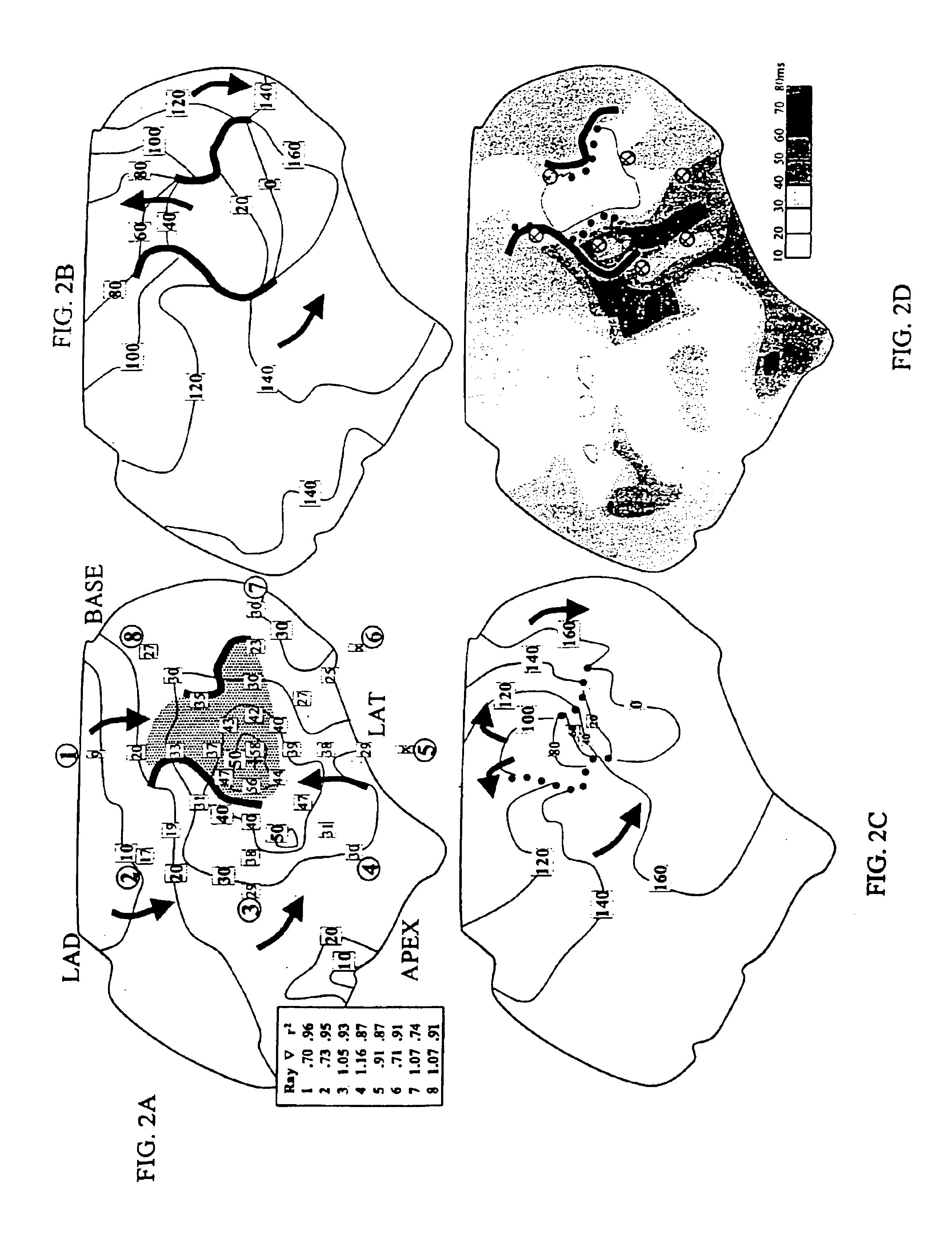System and method for determining reentrant ventricular tachycardia isthmus location and shape for catheter ablation
- Summary
- Abstract
- Description
- Claims
- Application Information
AI Technical Summary
Problems solved by technology
Method used
Image
Examples
Embodiment Construction
This invention provides a method for identifying and localizing a reentrant circuit isthmus in a heart of a subject during sinus rhythm, comprising the steps of: a) receiving electrogram signals from the heart during sinus rhythm via electrodes; b) creating a map based on the received electrogram signals; c) determining, based on the map, a location of the reentrant circuit isthmus in the heart; and d) displaying the location of the reentrant circuit isthmus.
In one embodiment of the above method, step b) includes arranging activation times of the received electrogram signals based on a position of the respective electrodes.
In one embodiment of the above method, the activation times are measured from a predetermined start time until reception of a predetermined electrogram signal.
In one embodiment of the above method, the map includes isochrones for identifying electrogram signals having activation times within a predetermined range.
In one embodiment of the above method, step c) incl...
PUM
 Login to View More
Login to View More Abstract
Description
Claims
Application Information
 Login to View More
Login to View More - R&D
- Intellectual Property
- Life Sciences
- Materials
- Tech Scout
- Unparalleled Data Quality
- Higher Quality Content
- 60% Fewer Hallucinations
Browse by: Latest US Patents, China's latest patents, Technical Efficacy Thesaurus, Application Domain, Technology Topic, Popular Technical Reports.
© 2025 PatSnap. All rights reserved.Legal|Privacy policy|Modern Slavery Act Transparency Statement|Sitemap|About US| Contact US: help@patsnap.com



